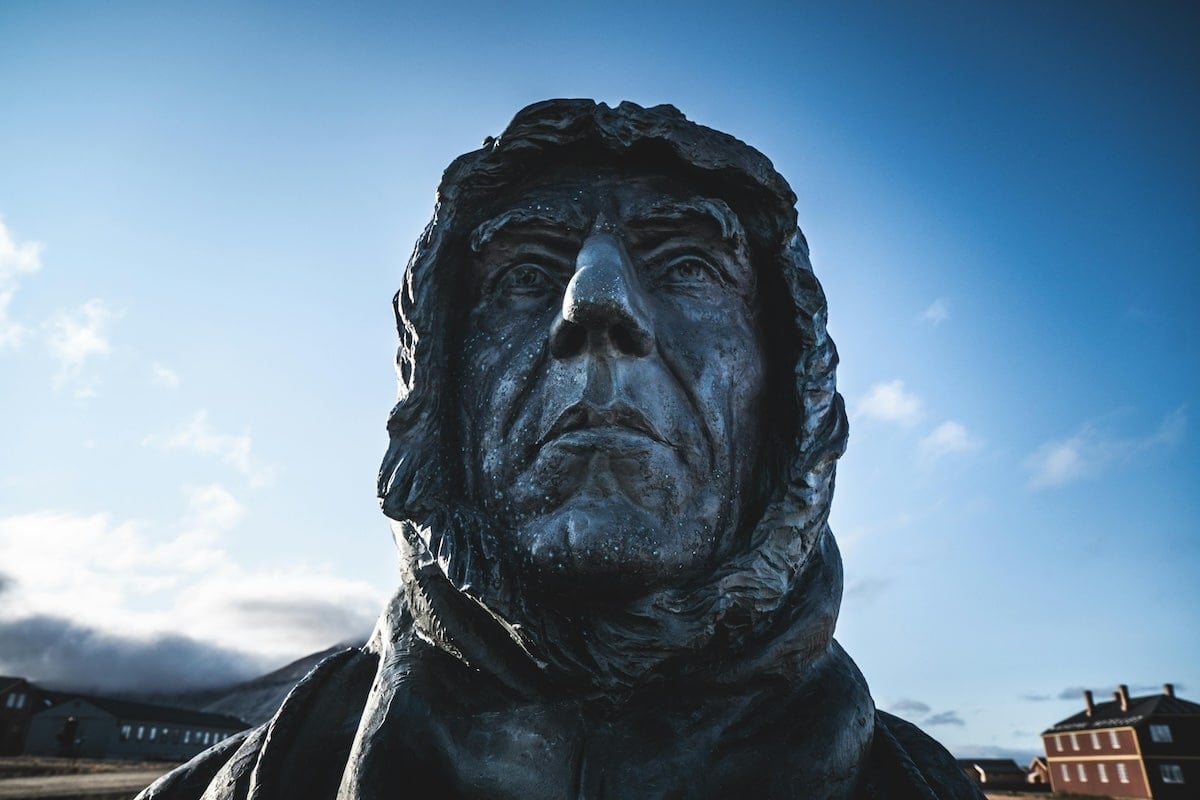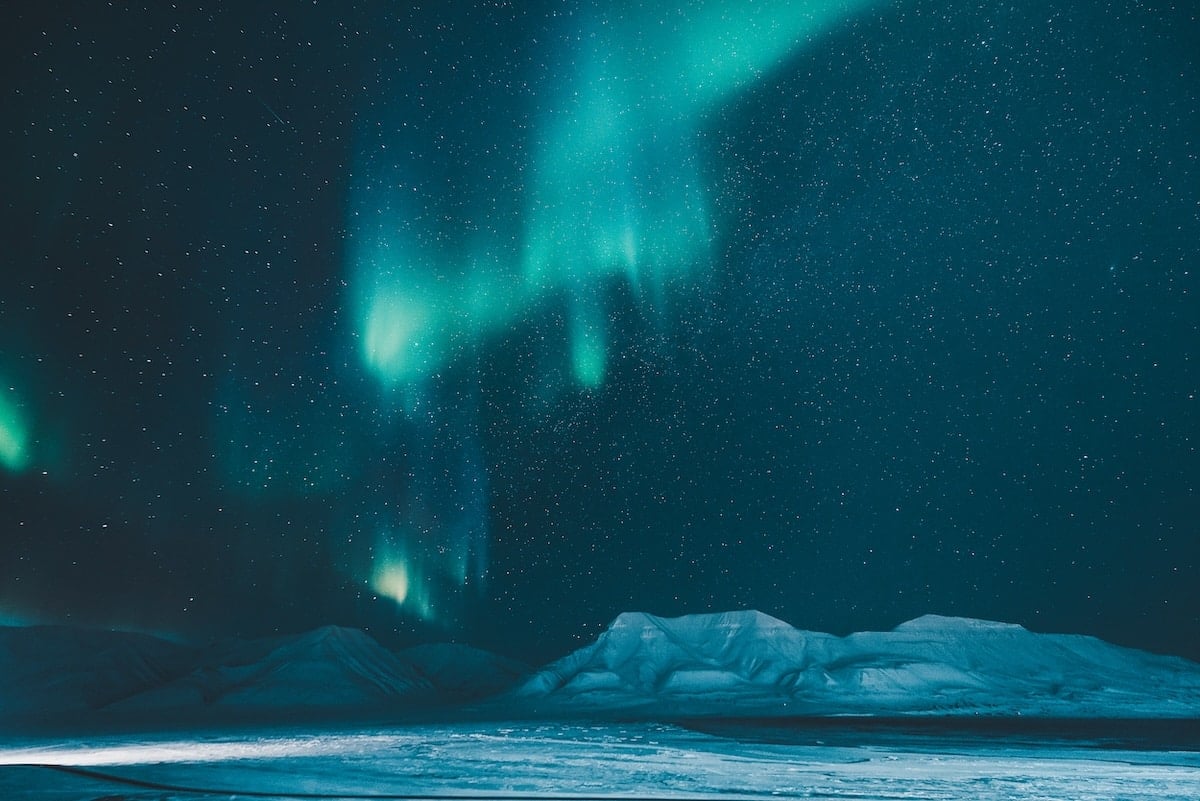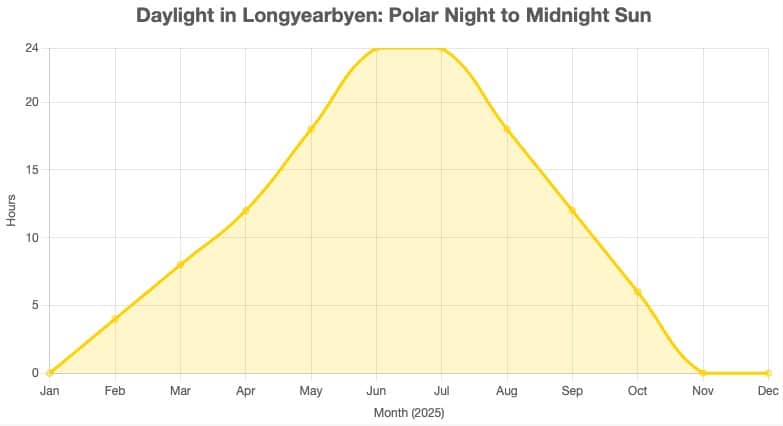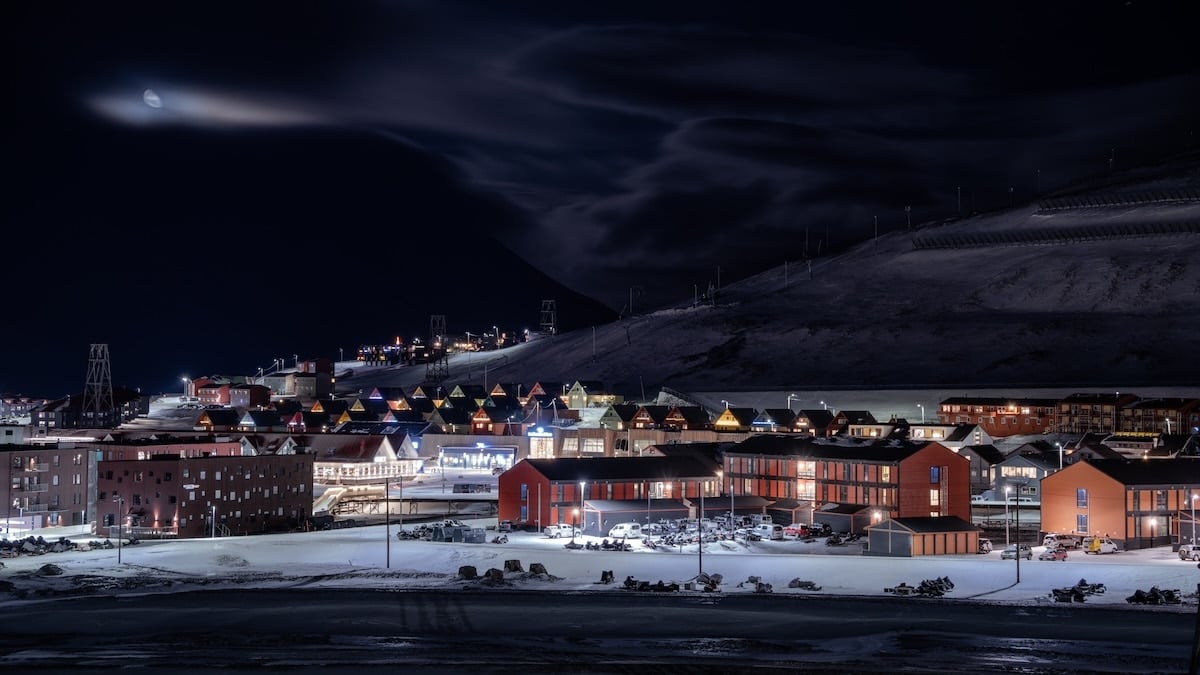Embracing the Eternal Twilight
Longyearbyen, Norway – The last sliver of sun slips behind the jagged peaks of Svalbard on November 14, 2025. For the next 107 days, Longyearbyen—Earth’s northernmost settlement with over 2,500 souls—will not see the sun again until 2026. At 78°13′N, this colorful cluster of wooden houses, perched halfway between Norway and the North Pole, plunges into polar night: a season of midnight skies, indigo twilights, and dazzling auroras. But far from a frozen void, this darkness is full of life, history, and human grit.

From Coal Dust to Global Guardian
Longyearbyen began as a gritty mining camp in 1906, when American tycoon John Munro Longyear staked coal claims on the icy fjords. “Longyear City” housed 500 roughneck workers in barracks beside perilous shafts—Mine 1 still stands as a museum. Norwegians bought the operation in 1916, and for decades, Store Norske ruled like a coal kingdom. Explosions, avalanches, and isolation were daily risks; Christmas church services were the only warmth in a male-dominated outpost.
The 1920 Svalbard Treaty transformed everything. Norway gained sovereignty, but 46 nations earned equal rights to settle, hunt, and mine—creating a demilitarized, visa-free zone. After World War II, mining waned. The last coal was hauled in 2017. Today, Longyearbyen is a research and tourism hub: the 1975 airport ended winter isolation, the University Centre in Svalbard (UNIS) trains Arctic scientists, and the Svalbard Global Seed Vault—buried in permafrost—guards 1.3 million crop varieties against apocalypse.

Quirks That Define the Arctic Edge
Life here defies norms. You can’t die in Longyearbyen—literally. Permafrost preserves bodies, and 1917 Spanish flu viruses were found in exhumed graves. Since the 1950s, burials are banned; the terminally ill fly south. The tiny cemetery hasn’t accepted a new resident in 80 years.
It’s a global village: 50+ nationalities, no indigenous population, just “Svalbardians” bonded by the vibe. Alcohol is rationed monthly via quota cards—a nod to mining days. The northernmost brewery crafts “Polar Night Porter,” and the Arctic World Archive stores GitHub’s code in an abandoned mine.

The Science and Magic of Polar Night
Earth’s 23.5° tilt means latitudes above 66.5°N get 24+ hours of darkness when the sun stays below the horizon. In Longyearbyen, true polar night begins November 14, lasting until January 29, 2026. But mountains delay the sun’s return—locals won’t see its disc until March 8, 2026, stretching the “blue time” to 132 days.
It’s not pitch black. Around noon, 2–4 hours of civil twilight paint the sky deep indigo, framed by snow-draped peaks. Nautical twilight follows mid-December. Vitamin D pills, saunas, and aurora hunts keep spirits high. Kids sled to school under stars; snowmobiles roar like Arctic motorcycles. Festivals like Polar Night Week (Jan 20–24, 2026) and Dark Season Blues turn darkness into celebration.
Solar maximum in 2025 means epic Northern Lights—G4 storms could dance in daylight skies.

Daylight Extremes: A Visual Journey
This chart reveals the town’s bipolar rhythm: endless day in summer, total night in winter. Twilight adds 2–5 “usable” hours—enough for skiing under auroras.
Why Darkness Calls
As Longyearbyen slips into its 2025–2026 slumber, it reminds us: darkness isn’t absence. It’s aurora-chasing, history-haunted hikes, and quiet wonder. From Longyear’s coal picks to the Seed Vault’s silos, this town embodies adaptation.
Book a January flight into the world’s northernmost airport. Join the glow. In a world racing toward light-speed, Longyearbyen dares us to pause—and revel in the night that lasts until dawn breaks in 2026.
Correction: In our article titled “This Norwegian Town Will Not See The Sun Again Until 2026” (posted November 13, 2025), we incorrectly stated the population as 1,500 people. The correct figure is approximately 2,400 people. We apologize for the error and have updated the original article accordingly.

